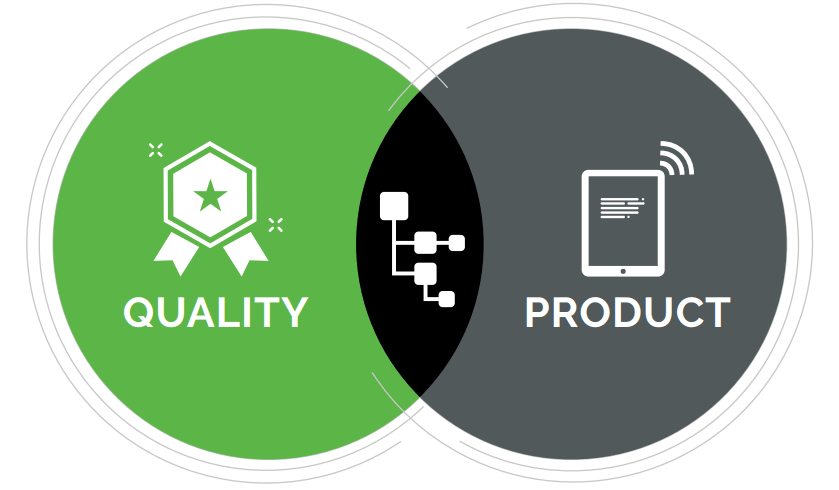Are You Prepared for an Increase in Medical Device Audits?

The medical device industry is redefining healthcare. Consider the incredible medical device innovations now and on the horizon: from surgical robotic systems and the integration of augmented, virtual, and mixed reality, to Bluetooth-enabled devices and the advent of artificial intelligence (AI) technologies. As a result, according to KPMG data, the medical device industry is expected to grow more than 5 percent a year to reach nearly $800 billion by 2030.
The Trend in Audits for the Medical Device Industry
With these technological advancements, medical device companies should expect audits to increase in the coming years. Market research points to audits being on the minds of device manufacturers, and with good reason. The CDRH Medical Device Enforcement and Quality Report cited that the Food and Drug Administration (FDA) increased its domestic device inspections by 46 percent and international device inspections by 243 percent over the past decade. Based on this trend, it will be more common to see an increased number of audits in the future.
According to market data and research firm Statista, the number of medical device recalls for a single year increased to a record high 2018 and also reached an all-time high for the period from late 2015 through 2019. This fact, coupled with the rise in medical device innovations through digital health, Internet of Things (IoT), and Artificial Intelligence (AI) technologies, means device manufacturers will need to be that much more prudent in 2020 to evaluate and select the right platform that supports internal and external audits and simplifies compliance.
Device manufacturers have a strong interest in making sure their audit requirements are met no matter how seemingly complicated the processes are. Whether the audit is conducted by the FDA, a customer, a product safety agency, a European notified body, or the device manufacturer’s own internal quality control team, it is important to leverage a quality management system (QMS). The optimal QMS solution will manage complex product information and quality processes to streamline product development with enhanced visibility and traceability. Selecting the wrong type of quality management software solution to support audit, regulatory compliance, and quality requirements increases the risk of penalties and product recalls.
An Audit Case in Point: Meeting Audits With Ease
Kim Khoe is the Director of Regulatory Affairs & Quality Assurance for Apical Instruments. Apical is a medical device contract manufacturer that provides design and manufacturing services for all stages of the development process from conceptualization to production. Khoe is always prepared for anything and wasn’t surprised to have two separate organizations visit her company during the same week to conduct their audits. “During a recent customer audit, a product safety agency also arrived to perform a quarterly follow-up service audit,” said Khoe.
Apical has been able to meet audits more confidently with a QMS solution that manages their quality processes in context to their product processes. This product-centric approach to QMS provides a single system to manage product record information including parts, bills of materials (BOMs), documents, and engineering change orders (ECOs) with all related quality records like nonconformances and corrective and preventive action (CAPA) processes. Having a product-centric QMS solution has accelerated new product introductions and eliminated confusion stemming from having disparate islands of information. Bruno Strul, Chief Executive Officer of Apical Instruments, went on to say, “I didn’t need to hire a team to manage the infrastructure associated with an on-premises siloed system. I only needed one person to help me, which kept my overhead costs low.”
Apical’s return on their investment was driven by a product-centric QMS solution that delivered cost savings while meeting audit and regulatory compliance mandates. Supporting audits was easier and less time consuming because the product and compliance information resided in one centralized cloud-based QMS system. This streamlined the management of BOMs, design history files (DHFs), device master records (DMRs), and ECOs. Khoe shared an example that showed how easy it was to follow an audit trail with Arena QMS. “We had a customer that needed proof that the product was RoHS compliant,” said Khoe. “Pulling the RoHS documents could have cost us $20,000 for this particular job. But with Arena, it saved us all that money because we had the documentation at our fingertips.”

The Bottom Line
Arena’s product-centric QMS delivers cross-functional visibility into product and quality processes. It centralizes the management of parts, assemblies, and documents to provide a clear, accurate status during all product development and introduction processes.
Having a distinct understanding of the impact new medical device technologies will have on the regulatory and legislative approval process will be essential for maintaining compliance in today’s evolving regulatory environment. And, by using a product-centric QMS, medical device manufacturers can stay one step ahead by maintaining compliance while increasing their commercial competitiveness.
While medical device manufacturers don’t look forward to audits, audits help ensure the delivery of safe and effective products that improve our health. It’s better to be audit-ready at all times instead of reacting when customer-demand pressures are high. To ensure compliance with the FDA and other regulatory bodies, it’s key to have a single product-centric QMS solution to keep all teams on the same page with better visibility and traceability to meet today’s demanding audits. Read our eBook to learn more about the advantages of product-centric quality management.


